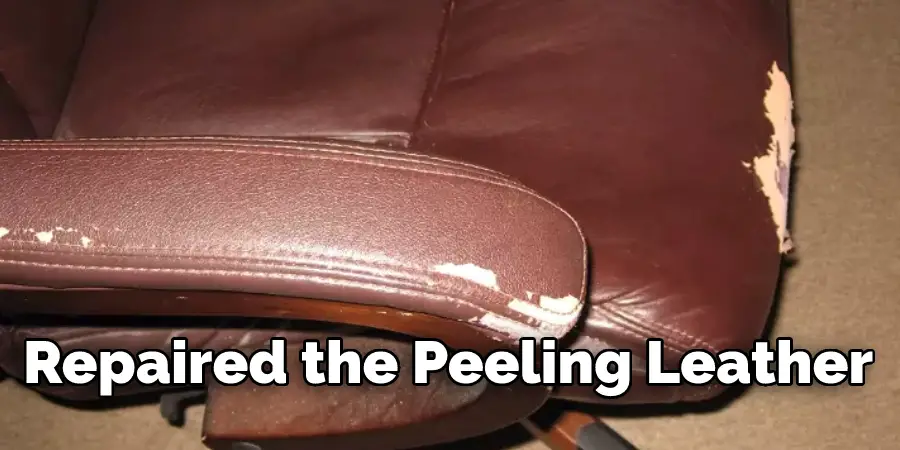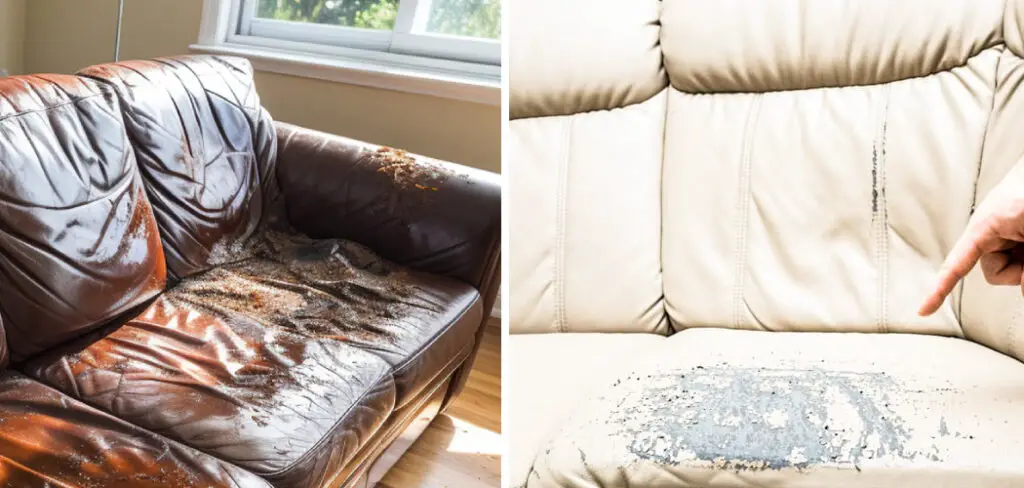Causes of Peeling Fake Leather

Peeling fake leather is a common problem that can occur with chairs and other furniture. While genuine leather is known for its durability and longevity, fake leather, also known as synthetic leather or faux leather, is susceptible to peeling due to various factors. This peeling can significantly impact the aesthetics and longevity of your furniture. Understanding the causes of peeling fake leather can help you prevent it or address it effectively.
Types of Fake Leather and Their Susceptibility to Peeling
The susceptibility of fake leather to peeling varies depending on the type of material used.
- Polyurethane (PU) Leather: This is the most common type of fake leather and is generally less expensive than other types. It is known for its soft texture and ability to mimic the look and feel of genuine leather. However, PU leather is prone to peeling, especially in areas that experience high friction or wear and tear, such as chair seats and armrests. This is because the polyurethane coating can become brittle and crack over time, leading to peeling.
- Polyvinyl Chloride (PVC) Leather: PVC leather is a more durable type of fake leather and is often used in commercial settings. It is typically more resistant to peeling than PU leather, but it can still peel if exposed to extreme temperatures or chemicals.
- Microfiber Leather: This type of fake leather is made from a fine, synthetic fabric that is coated with a polyurethane layer. Microfiber leather is known for its soft and supple texture and its ability to breathe. However, it can be prone to peeling if the polyurethane coating is not properly applied or if the fabric is not properly cared for.
Environmental Factors Contributing to Peeling
Environmental factors can significantly accelerate the peeling of fake leather.
- Sunlight Exposure: Prolonged exposure to sunlight can cause the polyurethane coating on fake leather to become brittle and crack. This is especially true for PU leather, which is more susceptible to UV damage than other types of fake leather.
- Moisture: Moisture can also contribute to peeling. If fake leather is exposed to excessive moisture, the polyurethane coating can become soft and sticky, making it more susceptible to peeling. This can occur from spills, humidity, or even prolonged exposure to rain.
- Temperature Fluctuations: Extreme temperature fluctuations can also cause peeling. When fake leather is exposed to high temperatures, the polyurethane coating can expand and contract, which can lead to cracking and peeling. Conversely, exposure to cold temperatures can also make the coating brittle and more prone to peeling.
Role of Manufacturing Defects in Peeling
In some cases, peeling fake leather can be attributed to manufacturing defects.
- Poorly Applied Coating: If the polyurethane coating is not properly applied during the manufacturing process, it can be prone to peeling. This can occur if the coating is too thin or if it is not evenly distributed.
- Low-Quality Materials: Using low-quality materials during the manufacturing process can also contribute to peeling. This is especially true for the polyurethane coating, which should be durable and resistant to cracking and peeling.
Prevention and Maintenance

Preventing peeling on fake leather chairs requires proactive care and maintenance. By understanding the factors that contribute to peeling and implementing preventive measures, you can extend the lifespan of your chair and maintain its aesthetic appeal.
Cleaning and Care
Regular cleaning is crucial for maintaining the integrity of fake leather. Dust, dirt, and spills can accumulate on the surface, leading to wear and tear.
Always use a soft, damp cloth for cleaning. Avoid harsh chemicals, abrasive cleaners, and excessive moisture, as these can damage the material.
- Use a mild soap solution: Mix a small amount of mild dish soap with warm water. Gently wipe the surface with the solution, paying attention to areas with visible dirt or grime.
- Avoid harsh chemicals: Avoid using harsh chemicals like bleach, ammonia, or solvents, as they can strip the protective coating and cause peeling.
- Dry thoroughly: After cleaning, dry the surface with a soft, clean cloth. Ensure that all moisture is removed to prevent mold and mildew growth.
Conditioning
Conditioning fake leather helps to maintain its suppleness and prevent cracking.
- Apply a leather conditioner: Regularly apply a leather conditioner specifically designed for fake leather. Follow the manufacturer’s instructions for application and frequency.
- Avoid over-conditioning: Excessive conditioning can make the surface greasy and attract dirt. Apply conditioner sparingly and only when necessary.
Protecting from Sunlight and Heat
Exposure to direct sunlight and excessive heat can cause the fake leather to fade, crack, and peel.
- Use curtains or blinds: Prevent direct sunlight from hitting the chair by using curtains or blinds.
- Avoid placing near heat sources: Keep the chair away from heat sources such as radiators, fireplaces, and direct sunlight.
Repairing Peeling Fake Leather: Fake Leather Chair Peeling

Peeling fake leather can be a common problem, but with the right tools and techniques, you can repair it and restore your furniture to its former glory. There are several repair methods, each with its own advantages and disadvantages. We will explore the most common repair methods, highlighting their pros and cons, and provide visual guidance to help you through the process.
Methods for Repairing Peeling Fake Leather
There are various methods for repairing peeled fake leather, each offering different levels of permanence and ease of application.
- Contact Adhesive: This method involves applying a strong contact adhesive to both the peeled section and the base material, then pressing them together firmly. This is a quick and inexpensive method, but it may not be as durable as other options, especially for larger areas.
- Fabric Glue: Fabric glue is specifically designed for bonding fabric and leather materials. It is generally more flexible and less likely to crack than contact adhesive, making it a better choice for areas that experience frequent movement.
- Leather Patch: Applying a leather patch is a more permanent solution for larger areas of peeling. The patch can be cut to the desired size and shape and then glued or stitched onto the base material.
- Professional Repair: If the peeling is extensive or you are unsure about the repair process, seeking professional help is the best option. Professionals have the expertise and specialized tools to repair the leather effectively and ensure a durable and aesthetically pleasing finish.
Comparison of Repair Methods, Fake leather chair peeling
| Method | Pros | Cons |
|---|---|---|
| Contact Adhesive | Quick and inexpensive, suitable for small areas. | May not be durable for larger areas or areas with frequent movement, can leave visible marks. |
| Fabric Glue | Flexible and less likely to crack, suitable for areas with movement. | May not be as strong as contact adhesive, can be more expensive. |
| Leather Patch | Durable and permanent solution, suitable for larger areas. | Requires more time and effort, may be more expensive than other methods. |
| Professional Repair | Ensures a durable and aesthetically pleasing finish, provides expertise for complex repairs. | More expensive than DIY methods, requires finding a reputable professional. |
Visual Guide for Repairing Peeling Fake Leather
Fake leather chair peeling –
Contact Adhesive:
[Image of contact adhesive being applied to both the peeled section and the base material.]
[Image of the peeled section being pressed firmly against the base material.]
[Image of the repaired area after the adhesive has dried.]
Fabric Glue:
[Image of fabric glue being applied to both the peeled section and the base material.]
[Image of the peeled section being pressed firmly against the base material.]
[Image of the repaired area after the glue has dried.]
Leather Patch:
[Image of a leather patch being cut to the desired size and shape.]
[Image of the leather patch being glued or stitched onto the base material.]
[Image of the repaired area after the patch has been applied.]
Resources for Sourcing Replacement Materials and Tools
You can find replacement leather patches and repair tools at various online retailers and local craft stores. Some popular online retailers include Amazon, eBay, and Etsy.
Local craft stores like Michaels, Hobby Lobby, and Joann Fabrics also offer a wide selection of leather patches and repair kits.
Remember that peeling fake leather chair? It’s a common problem, but don’t despair! For a more durable and stylish alternative, consider the classic bonded leather accent chair in cappuccino. It’s a great way to avoid the frustration of peeling and add a touch of elegance to your space.
You know that feeling when you’re sinking into a comfy chair, only to have a chunk of fake leather peel off and stick to your jeans? It’s a real bummer, especially when you dream of that luxurious, supple leather like the kind found on a Knoll Life chair.
While those chairs are a whole other level of comfort and quality, it’s a reminder that investing in real leather can save you from those peeling nightmares.